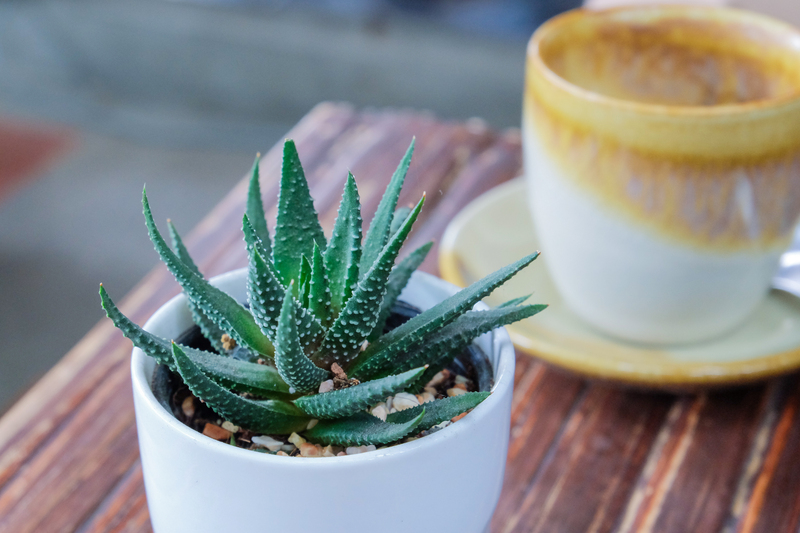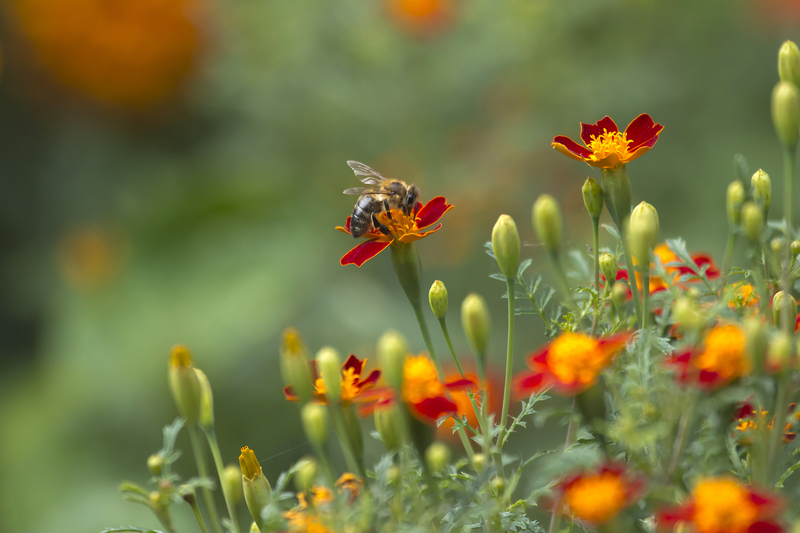Keeping Your Garden Lush Through Winter
Posted on 25/05/2025
Keeping Your Garden Lush Through Winter: Comprehensive Guide
Winter can be a challenging time for any garden enthusiast. As the temperatures drop, your once vibrant garden might seem doomed to dullness. However, keeping your garden lush through winter is not just possible--it's rewarding! With the right strategies, your outdoor oasis can stay healthy, colorful, and beautiful even in the colder months. This comprehensive guide dives deep into essential tips and expert advice for ensuring your garden flourishes all winter long.
Understanding Winter in the Garden
Winter brings a unique set of challenges for gardens. Since most common plants go dormant or die back, the landscape can quickly turn barren if not properly prepared. Knowing how to protect and nurture your plants during this period is the key to maintaining a lush winter garden.
- Soil protection is essential
- Plant selection can make all the difference
- Proper garden care must adapt to the season's demands

Choosing Cold-Hardy Plants for Your Winter Garden
Not all plants thrive in the cold, but with a little planning, you can select varieties that remain green and even bloom despite frost. Evergreen shrubs, winter-flowering bulbs, and ornamental grasses are some of the best choices for winter garden vitality.
Top Cold-Resistant Plants
- Holly (Ilex) - With glossy green leaves and red berries, hollies provide year-round interest.
- Wintergreen (Gaultheria procumbens) - Its evergreen leaves and red berries glow in the winter light.
- Heathers (Erica and Calluna) - Many heathers bloom in winter and offer lovely purple, pink, or white flowers.
- Bergenia - With large, leathery leaves, Bergenia is both hardy and striking through cold months.
- Snowdrops (Galanthus) - These delicate, early bloomers often poke through snowdrifts, signaling the promise of spring.
- Winter Aconite (Eranthis hyemalis) - These cheery yellow beauties flower even on the coldest days.
Tip: Choose native plants whenever possible, as they are adapted to your region's winter climate and resistant to local pests.
Soil Preparation and Mulching
Healthy soil is the backbone of a lush winter garden. The right soil amendments and protective ground cover can dramatically boost your garden's resilience.
Why Mulching Matters
Mulch acts as a protective blanket for your plant roots, helping to:
- Insulate the soil against extreme temperatures
- Reduce water loss through evaporation
- Suppress weed germination
- Enrich soil as organic mulch breaks down
Apply a layer of organic mulch (such as shredded bark, leaf mold, or compost) around the base of your plants before the first hard frost. Take care not to pile mulch directly against plant stems or trunks, as this can trap moisture and encourage disease.
Watering Strategies During Winter
Many gardeners mistakenly believe that plants don't need water during winter. In reality, evergreen species and recently planted shrubs and trees may suffer from winter drought. Here's how to keep your winter garden hydrated:
- Water deeply before the ground freezes to supply roots with moisture for the dormant period.
- Check soil moisture during mild spells. If the soil is dry, water your evergreens and new plantings on days when temperatures are above freezing.
- Water at the base of the plant to avoid wetting the foliage, which can encourage fungal diseases.
Tip: Water early in the day so excess moisture can evaporate before nighttime temperatures drop.
Protecting Vulnerable Plants From Frost and Snow
Some of your most beloved plants may require a little extra care when the temperature dips. There are several effective ways to shield plants from winter's worst effects:
- Wrap with burlap or horticultural fleece to ward off drying winds and frost heave.
- Use cloches or cold frames for tender perennials and winter vegetables.
- Group containers together in a sheltered spot and wrap pots with bubble wrap or felt to insulate roots.
- Remove heavy snow gently from branches to prevent breakage; use a broom to brush it off carefully.
- Consider constructing winter windbreaks with stakes and garden fabric for extra protection.
Dealing with De-Icing Salts
De-icing salts from sidewalks and roads can seep into garden beds, causing damage to roots and foliage. To minimize this risk:
- Use sand or non-toxic alternatives near your planting areas.
- Create small barriers to keep melting runoff away from sensitive plants.
Maximizing Winter Color and Interest
With a little planning, your winter garden can be full of color and life. Here are some ways to make your landscape stand out during the dreariest months:
Brighten Up With Berries and Bark
- Plant colorful-berried shrubs such as holly, cotoneaster, and pyracantha for visual appeal and to feed winter birds.
- Red-twig dogwoods (Cornus sericea) have crimson stems that glow against snow and grey skies.
- Paperbark maple and birch trees offer striking bark textures and hues.
Winter Flowering Plants
- Hellebores (Christmas rose) bloom during the darkest weeks and come in a variety of striking shades.
- Camellias yield brilliant, rose-like blooms through mild winters.
- Heather and Daphne provide color and fragrance on crisp January days.
Winter Lawn Care for Lasting Lushness
Don't neglect your winter lawn! Maintaining a lush lawn in winter sets the stage for a vibrant spring burst. Take these steps to help your grass survive until warmer days:
- Avoid excessive foot traffic on frosted grass to prevent breakage.
- Remove any remaining leaves and debris to prevent smothering and mold growth.
- Keep mower blades sharp and avoid cutting too short before winter begins.
- Consider overseeding with a winter-hardy grass blend in fall for extra green coverage.
Winter Containers and Planters: Outdoor Ambience All Season
Patio pots and planters don't have to go bare in winter. Get creative with arrangements of:
- Evergreen dwarf conifers for structural interest
- Winter pansies and violas for splashes of color
- Trailing ivy and heathers for texture
- Sprigs of red-twig dogwood, curly willow, and berry branches for decorative impact
Use lightweight, frost-proof containers and ensure good drainage to prevent root rot. Water occasionally on mild days, as container soil dries out faster in winter winds.
Year-Round Wildlife Support
A lush winter garden is more than just green and flowers. It's a haven for wildlife seeking food and shelter during the harsh months. Attract birds, pollinators, and beneficial insects with these strategies:
- Leave some seed heads standing as a vital food source.
- Provide water in a heated birdbath or regularly refreshed dish.
- Create small brush piles for overwintering insects and small mammals.
- Install nesting boxes or shelters for birds and beneficial creatures.
Indoor Gardening During Winter
If winter cold keeps you indoors, bring the garden inside! Houseplants and window boxes can add green touches to interior spaces. Popular choices for lush, indoor winter gardens include:
- Pothos, philodendrons, and spider plants for cascading foliage
- Peace lilies and anthuriums for winter blooms
- Herbs such as parsley, mint, and basil grown on a sunny windowsill
Remember to adjust watering routines to indoor heating conditions and provide supplemental humidity to mimic a natural environment.
Essential Winter Garden Tools and Equipment
Proper tools make maintaining lush winter gardens much easier. Make sure you have:
- Quality pruners for removing dead wood from dormant shrubs
- Snow shovels and brooms to clear paths and gently shake snow from branches
- Mulching tools for easy spreading of protective layers
- Horticultural fleece and burlap for defensive wrapping
- Thermometers and moisture meters to monitor microclimates

Planning for Next Winter's Success
The most beautiful winter gardens are the result of strategic, year-round planning. As you enjoy your current winter garden, take notes about what worked and what you'd like to improve next year. Take the time to:
- Record which plants stay green, bloom, or hold berries through the coldest weeks
- Sketch your plant arrangements for future reference
- List improvements for soil coverage or wind protection
- Order seeds and bulbs early for fall planting
Consider enrolling in winter gardening workshops or joining local gardening clubs for fresh inspiration and community support.
Keeping Your Garden Lush Through Winter: The Takeaway
Maintaining garden lushness through winter may require a little extra effort, but the rewards are well worth it. By carefully selecting cold-hardy plants, using effective mulch and soil strategies, protecting vulnerable varieties, and keeping up with essential care, you'll enjoy a thriving landscape all winter long. Remember, even during the harshest months, a smartly planned garden full of evergreens, winter blooms, and textured appeal can bring cheer to gloomy days and promise a strong, beautiful start to spring.
Winter gardens are a testament to a gardener's creativity and perseverance. Start preparing today, and soon your own outdoor retreat will stand as a lush, inspiring haven through the coldest days and beyond!

